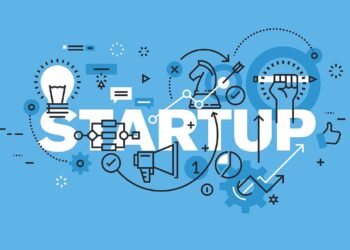In today’s fast-paced world, businesses must constantly innovate to stay ahead of the curve. As we approach 2025, several emerging business models are shaping the future of industries across the globe. These models are disrupting traditional business practices, offering new opportunities for both established companies and startups. This article explores the top five innovative business models that are set to revolutionize the business landscape in the coming years.
A. Subscription-Based Business Models
Subscription services have exploded in popularity in recent years, offering a recurring revenue model that is more predictable and scalable than traditional sales methods. From software as a service (SaaS) to entertainment platforms, the subscription model is now ubiquitous in industries ranging from technology to retail.
1. How Subscription Models Work
In a subscription-based business model, customers pay a recurring fee to access a product or service for a set period. This could range from monthly, quarterly, or annual subscriptions. The key to success in this model is providing ongoing value to customers, ensuring they remain subscribed over time.
2. Types of Subscription Models
A. Product-Based Subscriptions
Some companies offer products delivered on a recurring basis, such as meal kits, beauty products, or even pet supplies. This model works well for products that customers need to replenish regularly.
B. Content and Media Subscriptions
From Netflix to Spotify, content subscriptions have become a major industry. Businesses that provide media or entertainment, such as video, music, or educational content, offer consumers unlimited access to their content in exchange for a subscription fee.
C. Software as a Service (SaaS)
SaaS businesses provide access to software applications via the cloud. Instead of purchasing software outright, users subscribe to a service that is updated regularly, which ensures they always have access to the latest features and security.
3. Benefits of Subscription-Based Business Models
A. Predictable Revenue Streams
With customers committing to ongoing payments, subscription businesses often have more predictable and stable cash flow, allowing for better financial planning.
B. Customer Retention
Subscription models are excellent for fostering long-term customer relationships. By offering continuous value, businesses can build loyal customer bases that are less likely to churn.
C. Scalability
As customers subscribe, businesses can easily scale their operations without significant additional costs.
B. Platform Business Models
Platform business models are becoming one of the most prominent forces of disruption. Platforms connect producers and consumers in ways that were previously impossible, creating value by facilitating transactions between third parties. Think of companies like Uber, Airbnb, or Amazon.
1. How Platform Models Work
Platforms do not necessarily own the products or services they offer. Instead, they provide a marketplace where third-party suppliers can offer goods or services directly to consumers. The platform earns money by taking a commission on each transaction or subscription.
2. Types of Platform Business Models
A. Marketplaces
Marketplaces are platforms where buyers and sellers interact. Examples include eBay, Etsy, and Amazon. These platforms typically charge fees or commissions on transactions, offering convenience and security for both buyers and sellers.
B. On-Demand Platforms
Companies like Uber, Lyft, and DoorDash provide on-demand services via their platforms, connecting users with service providers (drivers, delivery personnel) in real-time. This model has disrupted industries such as transportation, food delivery, and home services.
C. Content Platforms
Platforms such as YouTube and Instagram allow users to generate and share content, while the platform profits from advertising revenue. These platforms thrive on user-generated content, creating massive value for both creators and viewers.
3. Benefits of Platform Models
A. Scalability
Since platforms often leverage third-party services or products, they can scale quickly with minimal investment in infrastructure.
B. Network Effects
The more users a platform attracts, the more valuable it becomes. This creates a network effect, where the platform’s value increases as its user base grows.
C. Lower Operational Costs
Platforms typically do not need to manage inventory or staff directly. Instead, they facilitate transactions, often making this model more cost-effective.
C. Sharing Economy Models
The sharing economy, also known as collaborative consumption, is one of the most transformative trends of the 21st century. This model involves individuals sharing access to goods or services, usually facilitated by an online platform.
1. How Sharing Economy Models Work
In the sharing economy, individuals rent out their underutilized assets (e.g., cars, homes, or equipment) to others for a fee. By maximizing the value of these assets, the sharing economy helps reduce waste and create more efficient systems.
2. Examples of Sharing Economy Businesses
A. Ride-Sharing
Services like Uber and Lyft allow people to use their personal cars to transport others, thus generating income for car owners and offering a more affordable alternative to traditional taxis.
B. Home-Sharing
Airbnb has revolutionized the travel industry by enabling homeowners to rent out their properties or spare rooms to travelers. This gives travelers more affordable options and offers homeowners a chance to monetize their properties.
C. Peer-to-Peer Lending
Companies like LendingClub have disrupted the banking industry by offering peer-to-peer lending platforms, allowing individuals to lend money directly to other individuals or businesses, bypassing traditional financial institutions.
3. Benefits of Sharing Economy Models
A. Cost Efficiency
The sharing economy promotes resource optimization, allowing businesses and individuals to make money from assets that would otherwise be idle.
B. Environmental Sustainability
By encouraging the reuse of assets and reducing waste, the sharing economy supports environmental sustainability.
C. Access Over Ownership
The sharing economy prioritizes access to goods and services rather than ownership, which aligns with the preferences of modern consumers who value experiences over material possessions.
D. Freemium Business Models
The freemium model is a popular business strategy where basic services are offered for free, while premium features or advanced functionality are offered at a cost. This model is particularly common in the digital and tech industries.
1. How Freemium Models Work
Freemium services typically provide a limited version of their product or service for free, with the goal of converting free users into paying customers. The idea is to give users a taste of the value they can expect, encouraging them to upgrade for more features, capabilities, or customization.
2. Examples of Freemium Business Models
A. Software and Apps
Many mobile apps and SaaS companies, like Spotify, LinkedIn, and Dropbox, use the freemium model. Users can access basic functionality for free but must pay for additional features, storage, or services.
B. Gaming
In the gaming industry, freemium models are used for in-app purchases. Popular mobile games such as Candy Crush and Fortnite offer free gameplay with the option to purchase in-game items, power-ups, or advanced levels.
C. Content Platforms
Websites like Medium and The New York Times offer free articles or content but require a subscription to access premium articles or ad-free experiences.
3. Benefits of Freemium Models
A. Large User Base
Freemium models attract a broad audience by offering free access, which increases the potential for conversion into paying customers.
B. Brand Awareness
By offering free services, businesses can attract customers who may otherwise be hesitant to pay upfront, building brand awareness and trust.
C. Upselling Opportunities
Freemium models provide ample opportunities to upsell customers by offering value-added services or advanced features that improve the user experience.
E. Artificial Intelligence (AI) and Automation Models
AI and automation are rapidly changing business operations. Companies are now using AI to improve customer service, enhance productivity, and optimize various business processes. This model involves integrating intelligent systems into business operations to reduce human intervention and increase efficiency.
1. How AI and Automation Models Work
AI-driven businesses use machine learning, natural language processing, and data analytics to automate processes that were traditionally performed by humans. This can range from chatbots handling customer service to AI-powered analytics predicting market trends.
2. Examples of AI and Automation Models
A. Chatbots and Customer Support
AI-powered chatbots are increasingly being used to handle customer inquiries, providing instant responses and freeing up human agents for more complex tasks.
B. Predictive Analytics
Businesses in industries like retail and finance use AI to predict trends and customer behavior, allowing them to make data-driven decisions about inventory, marketing, and sales strategies.
C. Robotic Process Automation (RPA)
RPA software automates repetitive tasks such as data entry, allowing employees to focus on more strategic activities that require human judgment.
3. Benefits of AI and Automation Models
A. Increased Efficiency
AI and automation streamline business operations, reducing the time and effort required for manual tasks.
B. Cost Reduction
By automating routine tasks, businesses can cut costs associated with human labor and increase profitability.
C. Enhanced Decision-Making
AI-driven insights allow businesses to make more informed decisions based on real-time data and predictive analytics.













